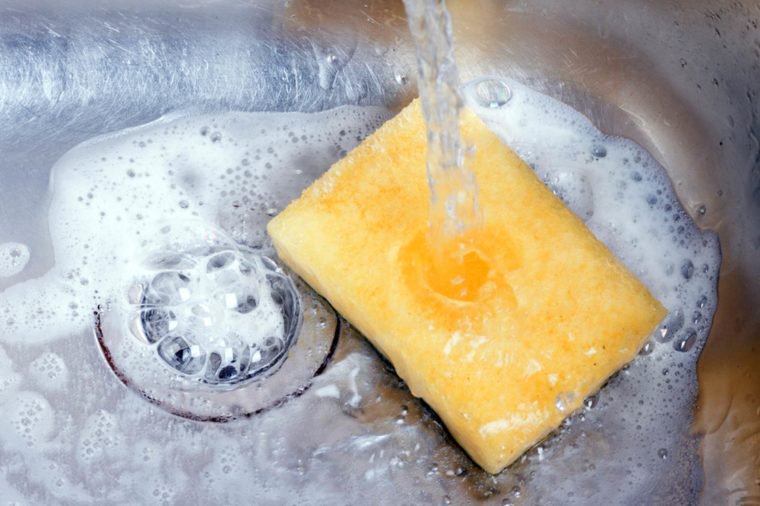Sponges are meant to be cleaning products, but they can’t quite do their job when they’re crawling with bacteria—which yours probably is. We’ve already talked about why kitchen sponges are the germiest place in your house, but here’s a little refresher: Sponges are ideal for cleaning because they’re so good at holding water. The downside is, that makes them warm and moist—the perfect environment for bacteria to thrive.
Worst of all, there’s really no good way clean out all that bacteria out once it’s cozied up in your sponge’s pores. A recent study in Scientific Reports found no cleaning method could get rid of more than 60 percent of bacteria. (Don’t miss these other 11 items you should be cleaning way more often.) To keep your cleaning tools, well, clean, the authors recommend swapping out for a new sponge once a week—way more than most people throw theirs out. Buying replacement sponges all the time seems like a waste of money, so what’s a thrifty homeowner to do?
Turns out, you don’t need to ditch an old sponge for good once you’ve banished it from the kitchen.
First things first: Get as much bacteria out as you can by using the only way microbiologists approve cleaning a sponge. Once you’ve washed off any food remnants and cleaned off as many germs as possible, you’re ready to give it a new home. You won’t want to use it on the cooking tools and countertops your food touches, but it still has a use. (Don’t miss these other 17 clever ways to wash hard-to-clean items.)
Reserve icky old sponges for dirty jobs like cleaning the bathroom, microbiologist Markus Egert suggests to the New York Times. You can also use it to wipe down dirty spots like tires and trashcans, according to Apartment Therapy. The site recommends snipping off a corner of the sponge so you remember it’s for dirty jobs, not the kitchen.
This Old House also recommends getting creative with how you use an old sponge. For instance, you can put one under a planter’s soil to retain water, or glue pieces to the bottom of furniture feet or the back of picture frames to keep marks off your floors and walls.
You shouldn’t hold onto it forever, but at least you won’t be putting a bacteria-filled sponge around your eating space.












